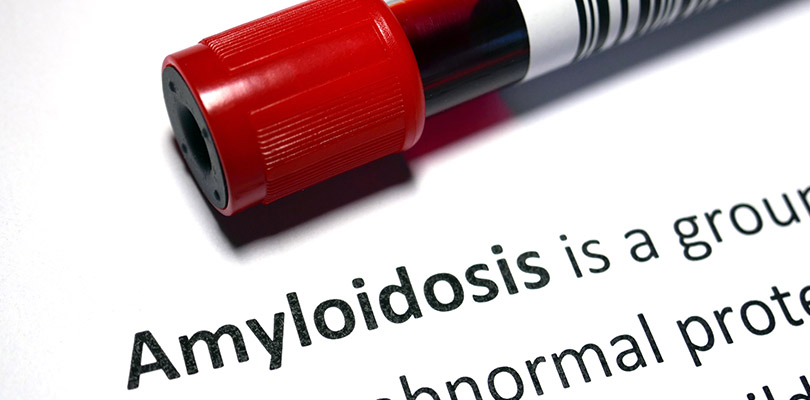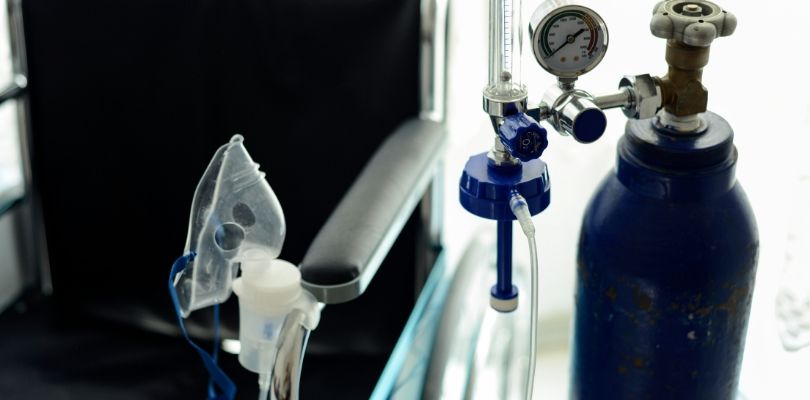Home Remedies for Ear Infections
Earaches are horrendous. They make concentration hard, they hurt, and they certainly make us grumpy and uncomfortable.
When you experience an ear infection, a lot of us wait it out because we think we’re too busy to see the doctor. You shouldn’t suffer from an ear infection if you don’t have to. There are many treatment options available to you, and you may only need to consult your kitchen cupboard for a solution.
What Is an Ear Infection?
Most ear infections are viral, and they come with pain and inflammation to the inner, middle, or outer ear. If your ears get blocked up, germs can get into your ears and cause an infection which usually presents as pain inside of your ear, along with other symptoms.
These infections are neither dangerous or contagious, however, you can catch a cold from another person that ends up turning into an ear infection. Ear infections can come from a variety of sources.
What Causes Ear Infections?
Typical causes of ear infections are germs, viruses, fungi, or bacteria. How infections occur usually determine the type of infection a person will get.
If you have a weakened immune system, or you already have inflammation in your ear, you are more likely to experience an ear infection. If you’re already fighting a cold, flu, or allergic reaction, you may already have an earache. However, causes are not limited to what physically happens inside your ear.
If you have a family history of infection or diabetes, you are more at risk for ear infections. Those who suffer from chronic skin conditions, like eczema or psoriasis may be more likely to contract ear infections.
Respiratory issues, including sinus and throat infections, or smokers and those who experience second-hand smoke are also prone to middle ear infections. Other contributing factors include altitude or climate changes.
Eustachian Tubes and Ear Infections
The bacteria and germs travel through connected passageways and make themselves at home in the Eustachian tubes (tubes that connect the ear to the nose and throat).
These tubes also control the pressure in the ear. Their location makes them a great place for germs to grow because of the warm and moist environment.
Infected tubes can swell, which prevents proper drainage, and traps germs. The germs grow and contribute to the symptoms of infections that occur in the middle ear.
Types of Ear Infections
There are three parts to your ear that can become infected. The inner, middle, and outer ear. Inner ear infections are less common, and sometimes the sign of another condition. The majority of infections happen in the middle and outer ear.
Inner Ear Infections
The inner ear is the innermost part of the ear. An ear infection located here is also called Labyrinthitis, which is inflammation inside the inner ear, specifically the part of your ear that helps control your balance. This type of infection may be caused by viral and bacterial ear infections as well as respiratory illnesses. A symptom of this type of infection is vertigo, which also may need to be treated.
Middle Ear Infections
The middle ear is found behind the eardrum and is the part of the ear that transmits sound from the outer ear to the inner ear. Causes of infections here are usually the result of bacteria or viruses from the mouth, eyes, and nasal passages get trapped behind the eardrum.
You will feel pain and experience the sensation of plugged ears—kind of like the feeling of being underwater. Inflamed eardrums are less sensitive to sound, which may result in some difficulty hearing. If the eardrum tears because of the pressure buildup, fluid may drain from the ear.
Outer Ear Infections
The outer ear is the part of the ear that goes from the outer opening of the ear and includes the ear canal all the way to the eardrum. Infections found in the outer ear may start as a rash on the outside of the ear and spread to the ear canal. The ear canal is inviting for germs because the warmth provides great breeding ground for germs.
These ear infections can also result from injury or irritation to the ear canal itself—due to objects such as cotton swabs or fingernails (more often in children). Symptoms include red and warm skin around the area, and pain, swelling, and tenderness to the ear or ear canal.
Swimmers Ear
If you spend a lot of time in the water, you may be putting yourself at risk for Swimmer’s Ear, which is a type of outer ear infection. After swimming or bathing, any water that remains in the ear canal can create great conditions for germs to multiply. Because of this, untreated water is more likely to cause an outer ear infection.
Symptoms of Ear Infections in Children and Adults
Ear infections are more common in children than in adults.
Children get ear infections 67 percent of the time they get a cold. Kids between six months and two years are more susceptible to ear infections because of the size and shape of their Eustachian tubes. Their immune systems are also still developing which increases the likelihood of getting certain infections.
Ear infections can be more serious in adults than in children, which is why it is important to know the signs.
Symptoms of an Ear Infection in Children
- Young children will pull or tug at their ears
- They may cry or be fussier than normal
- Fever
- They don’t seem to hear or respond to quieter sounds
- Balance issues
- Fluid draining from the ear (if this is one of your child’s symptoms, go and see a doctor right away)
- Restlessness or trouble sleeping
- Likely to happen if the child is already sick with a cold or virus
Symptoms of an Ear Infection in Adults
- Inflammation and pain/swelling of the ear
- Tenderness
- Pain is worse when lying down.
- Changes in hearing
- Nausea/vomiting
- Dizziness
- Fever
- A headache
- Fluid buildup
- Discharge is a symptom of a more serious issue. If you ever have an ear infection where there is discharge, consult a physician immediately.
Knowing what to look out for will be beneficial to help determine next steps. There are several options for treatment, which include traditional and home remedies.
Traditional Remedies for Ear Infections
Gentian violet is an affordable, easy-to-use treatment option for thrush, fungal infections, parasites, and bacterial skin infections.
- Physicians used to prescribe antibiotics immediately, generally Amoxicillin, a penicillin antibiotic. With the rate in which many minor ear infections resolve themselves, doctors are more inclined to wait a few days before pulling out their prescription pad. Your immune system doesn’t always need help. It can fight off the infection and correct mild infections all on its own. Medications offer symptom relief and help clean the affected hear.
- See a chiropractor. Getting an adjustment may help relax the muscles around the Eustachian tubes which enables trapped fluids to flush out and encourage the tubes to drain properly. Chiropractic care stimulates the nervous system and benefits the overall health of your body.
- Get your allergies tested. Food allergies may contribute to the contraction of ear infections. Allergies to foods like gluten, nuts, or dairy may trigger chronic ear infections (especially in children). By finding out your allergens or sensitivities, you can save yourself from future earaches.
15 Home Remedies for Ear Infections
Things you may put inside the ear for relief (do not use these remedies if you have a ruptured eardrum or have drainage coming from your ear):
- White vinegar rinse restores the ear’s natural pH balance and alleviates swelling, which will help soothe pain and also is a preventative measure.
- A few drops of warm onion juice. This is a remedy that dates back to at least the nineteenth century. There is speculation that there are anti-inflammatory properties to onions that help reduce swelling and pressure inside the ear as well as alleviate some of the pain.
- Drops of warm olive oil (enough to coat the inner lining of the ear). Warm up the oil like you would with a baby bottle and use an ear dropper (or a paper straw). The oil will provide temporary relief for the ear infection.
- Use Garlic Oil in the same way you would use olive oil. Studies show that garlic has antimicrobial, antiviral, and antifungal properties. It helps boost immune health. Garlic Mullein mends earaches by helping to control inflammation and killing germs.
- Put a capful of hydrogen peroxide in each ear for 3-5 minutes then let it drain out. It will help prevent excessive earwax.
Heat Helps:
- If you have a heating pad or hot water bottle, rest your ear against it. The application of heat around the ache helps relieve the pain.
- In case you don’t have a heating pad, a DIY option is to put a cup of salt, rice, or quinoa into a large sock. You can heat it up in the microwave and place it outside of the affected ear for 10 minutes.
Other Tricks That Help Manage the Pain of an Ear Infection:
- Elevating your mattress to help with drainage. Adults can prop themselves up with pillows, although their Eustachian tubes are positioned more vertically, which already promotes natural drainage. For children, instead of putting pillows under their heads, elevate the end of the mattress instead. In young children, the Eustachian tubes are more horizontal, which is why they need to be propped up differently.
- Water is key. The act of sipping and swallowing may help open the Eustachian tubes. Proper hydration also helps to clear out mucus and flush toxins from the body.
- Probiotics have shown to be effective in cases of ear infections in children. Probiotics also help ear infections from happening at all. They’re not just a method of defense, but prevention as well. Can be taken as a supplement or eating things like kimchi or kombucha.
- Increase your vitamin D intake. Vitamin D is known to contribute to your immune health, which may help prevent or treat ear infections. New research is coming out that vitamin D supplementation may help reduce upper respiratory tract infections, which includes ear infections.
- Embrace a healthy lifestyle. Make sure you’re getting enough sleep, and you’re eating healthy foods. Both of these factors contribute significantly to your body’s ability to heal. Omega-3 fats help reduce inflammation. Fruits and vegetables with high vitamin C content contribute to immunity.
- Eat foods that are high in zinc such as meat, nuts, legumes, and shellfish. Zinc is a micronutrient that boosts the immune system and promotes healing.
- Gargling with salt water may possibly help clear the Eustachian tubes. Since ear pain may be the result of a sore throat, this remedy may help make your symptoms less severe.
- Take a hot shower. The steam will help loosen congestion in your ear, which in turn may ease your earache.
When to See a Doctor
Minor earaches may not be something to fret about. In a lot of cases, ear infections may go away on their own. If you experience any of the following, you should see a doctor right away if:
- Symptoms do not improve within three days.
- New symptoms start to occur. New symptoms may include the addition of a fever, stiff neck, severe pain, or loss of balance.
- Your ear infection comes with discharge.
Make sure you do your research before trying any home remedies you haven’t used before. If you are uncertain or worried about trying a new approach, be sure to schedule an appointment with your physician. Young children who have an ear infection or fever should see their pediatrician right away.
The next time you or your child experience an ear infection, there are some things you can do to ease the discomfort. Remember that your child may have different symptoms than you, so be sure to keep an eye out for any indication of an ear infection. Try out some of these home remedies to make your next ear infection more tolerable.







